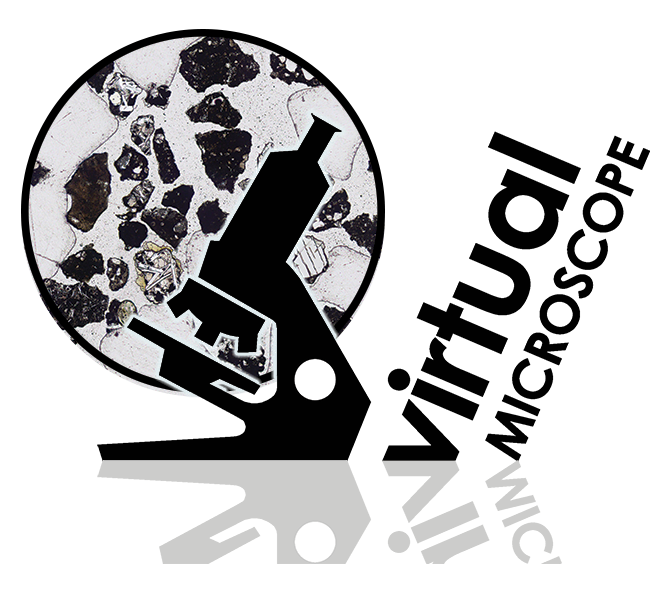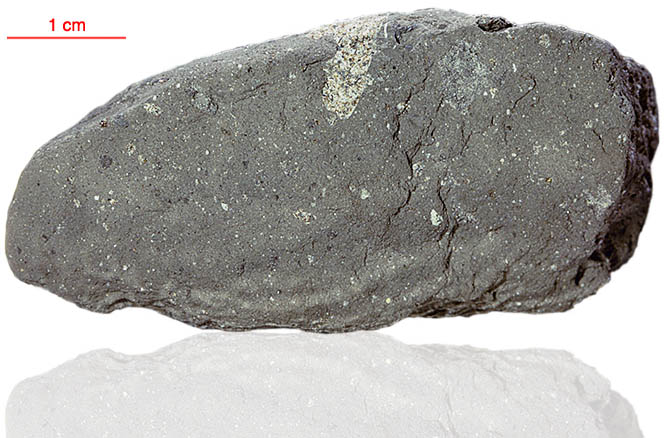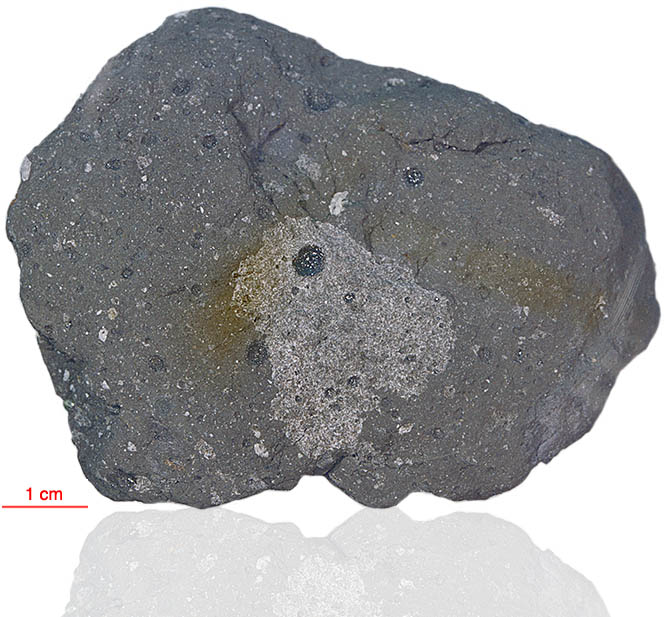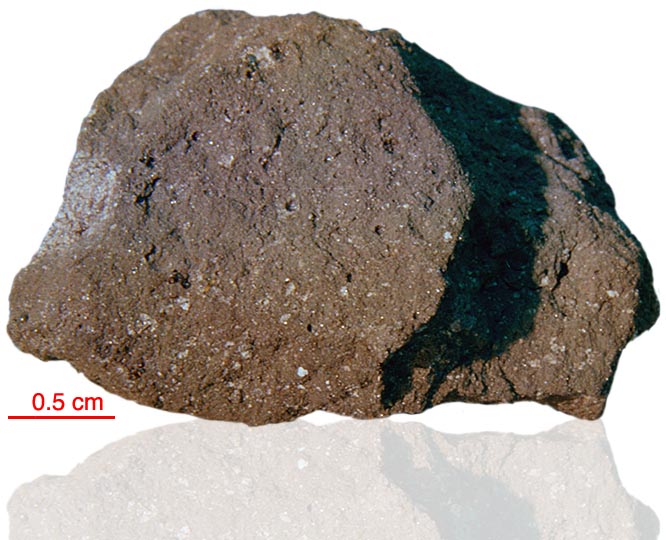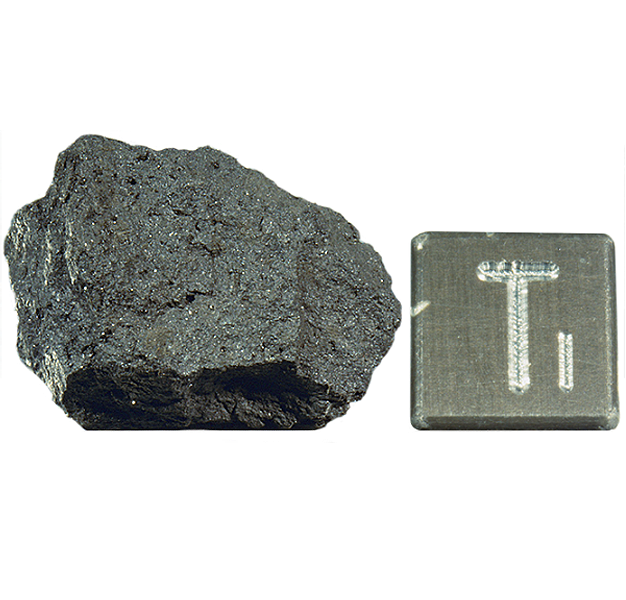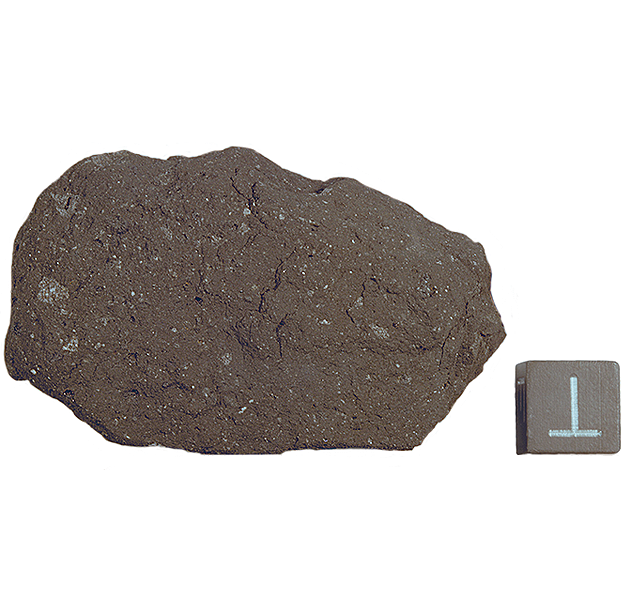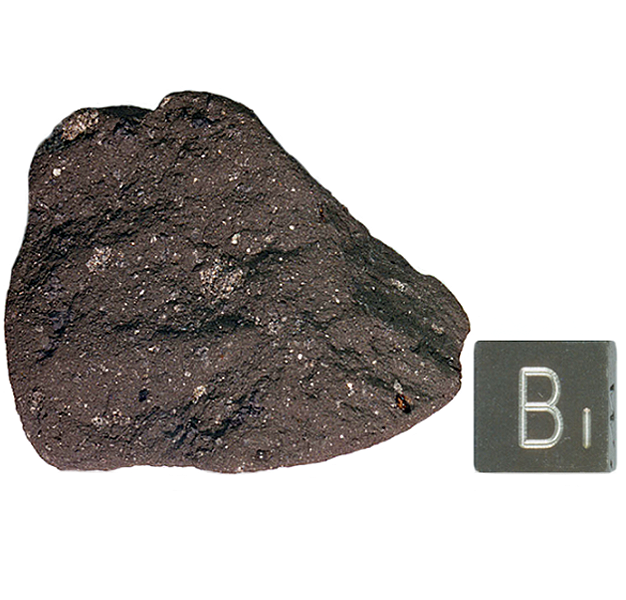
Fact sheet
Sample 10021 is a mature friable soil regolith breccia. It was collected as part of the contingency sample from the area immediately in front of the Lunar Module. The sample contingency bag also contained samples 10023, 10025, 10027 and 10028, some or all of which may be pieces of the same.
The matrix of 10021 is dark brown-black glass which contains large accretionary structures and relict agglutinates. Glass spheres and fragments are common. The largest fragments seen in thin section are mare basalt, and gabbroic anorthosite from the lunar highlands. Devitrified glass shards and crystal fragments (plagioclase feldspar, pyroxene and ilmenite mainly) complete the assemblage. A few grains of troilite (yellow) and metallic iron (silvery grey) are visible in reflected light.
Further details of this and other Apollo samples are here: http://curator.jsc.nasa.gov/lunar/
The Apollo 11 samples create an iconic collection since they were the first rocks collected by humankind that were returned to Earth from another solar system body. The Apollo 11 team collected and returned 22 kg of rock and soil samples.
Apollo 11 launched from Cape Kennedy on 16 July 1969. An estimated 530 million people watched Armstrong's televised image and heard his voice describe the event as he took "...one small step for a man, one giant leap for mankind" on 20 July 1969.

